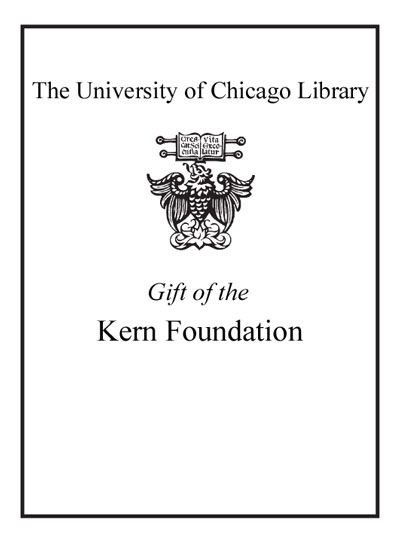Review by Choice Review
In this popularizing, out-of-field book, Fleming, a medievalist perhaps oversensitive to the "Dark Ages" label, argues that the Enlightenment also had its "dark side" of superstition and irrationality. Loosely organized around this theme, the book's chapters range from about 1660 to 1815, and include three biographic sketches (Irish folk-healer Valentine Greatrakes, Italian esoteric Freemason and magician Joseph Balsamo Cagliostro, and Baltic socialite and novelist turned prophetess Julie de Krudener), as well as discussions of convulsionaries, Rosicrucians, and the Kabbalah. The book's title is somewhat misleading, as its contents only tangentially engage with the Enlightenment as usually understood (Greatrakes, Cagliostro, and Krudener, though fascinating, are hardly representative), give little sense of change over time, and rarely address either the classic or revisionist historiography on the Enlightenment or the growing body of scholarship on the history of magic. Based on secondary sources rather than original research, the approach is anecdotal rather than analytical, and the lack of scholarly apparatus such as footnotes and bibliography limit the book's usefulness for academics. Nevertheless, Fleming is a genial and broadly learned raconteur, and general readers may enjoy this romping ride through the long 18th century. Summing Up: Recommended. Best for public libraries and general collections. D. A. Harvey New College of Florida
Copyright American Library Association, used with permission.
Review by Library Journal Review
Even today, most historians are more at ease with the study of empiricism than with that of the esoteric, but of no age is this truer than the hyper-skeptical Enlightenment. Thus the importance of this study by Fleming (humanistic studies, retired, Princeton; The Anti-Communist Manifestos: Four Books That Shaped the Cold War), which directs attention away from the standard skeptics of that age to its occult side. The mainstream thought of the Enlightenment, he argues, was not materialist as much as sacramental: "The material world paralleled another that was immaterial and invisible." The activities of the time that he discusses often looked like science, but they weren't; occultists, alchemists, and members of secret societies appropriated the form and language of the sciences to reach radically different conclusions. In interlocking chapters, Fleming discusses an English "stroker" who healed by touch; Cagliostro, an alchemist, magus, and charlatan; Rosicrucians and Freemasons; and the career of sentimental novelist Julie de Krudener, who ended her life a mystic. VERDICT Written with a verve not usual in scholarly works-and all the better for it-this exceptional book will attract all who love history, and not just its scholars.-David -Keymer, Modesto, CA (c) Copyright 2013. Library Journals LLC, a wholly owned subsidiary of Media Source, Inc. No redistribution permitted.
(c) Copyright Library Journals LLC, a wholly owned subsidiary of Media Source, Inc. No redistribution permitted.
Review by Kirkus Book Review
A former professor (Humanistic Studies/Princeton Univ.) shows that the intellectual glow of the Enlightenment contended with the forces of religious faith, superstition and quackery. Fleming (The Anti-Communist Manifestos: Four Books That Shaped the Cold War, 2009, etc.) acknowledges that he comes at his new subject with an educated amateur's credentials. However, his learned but reader-friendly text undercuts his modesty. The author deals principally with significant, illustrative figures from the period--names unfamiliar to many--beginning with Valentine Greatrakes, a man who discovered he could touch and cure those afflicted with scrofula. Fleming notes that Greatrakes refused to take payment or otherwise profit from his successes--and there were many. Next, the author turns to the Convulsionists, those who experienced convulsions and were healed by novenas spoken at the Saint-Mdard cemetery. He follows with long sections about the Rosicrucians and Freemasons, carefully charting their history while pausing occasionally to point out contemporary analogies. Then, he turns his attention to the "occult arts"--magic, sorcery and alchemy--and spends some time describing the equipment alchemists used and explaining the aims of their practices. He ends with critical biographies of two remarkable individuals, Alessandro Cagliostro, who rose quickly as a healer, then fell when he was associated with the scandal involving a priceless necklace (Marie Antoinette appears here); and Julie de Krdener, who rose to prominence as a novelist (with the help of Madame de Stal), then turned to religion and numerology before her tumble from fame. Fleming continually steps back to point out the survival of some of these ideas in modern life--President Ronald Reagan, for example, was a chiliast, or one who held a "historical or theological view based on an interpretation of the Apocalypse, and by extension any attempt to apply Bible prophecy to an interpretation of secular history." Learned, sophisticated and amusing at times--and invariably enlightening.]] Copyright Kirkus Reviews, used with permission.
Copyright (c) Kirkus Reviews, used with permission.
Review by Choice Review
Review by Library Journal Review
Review by Kirkus Book Review

